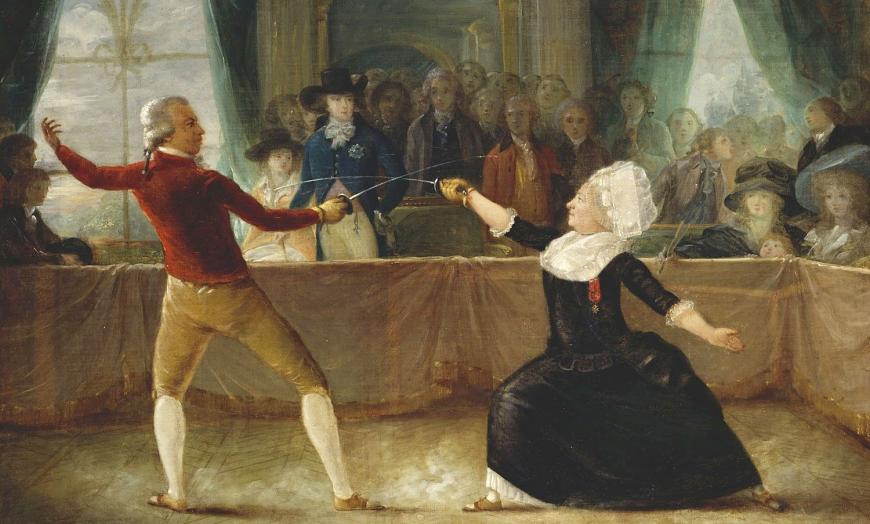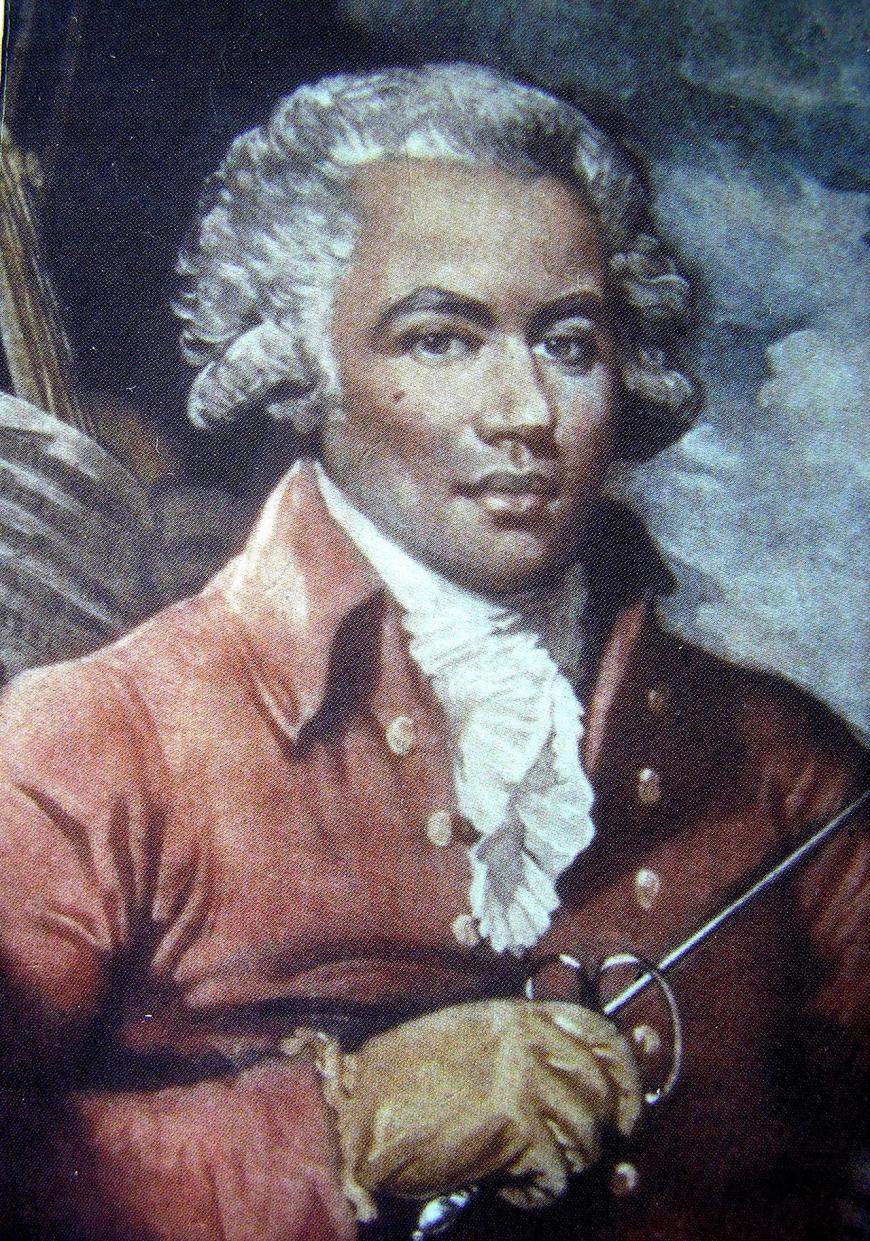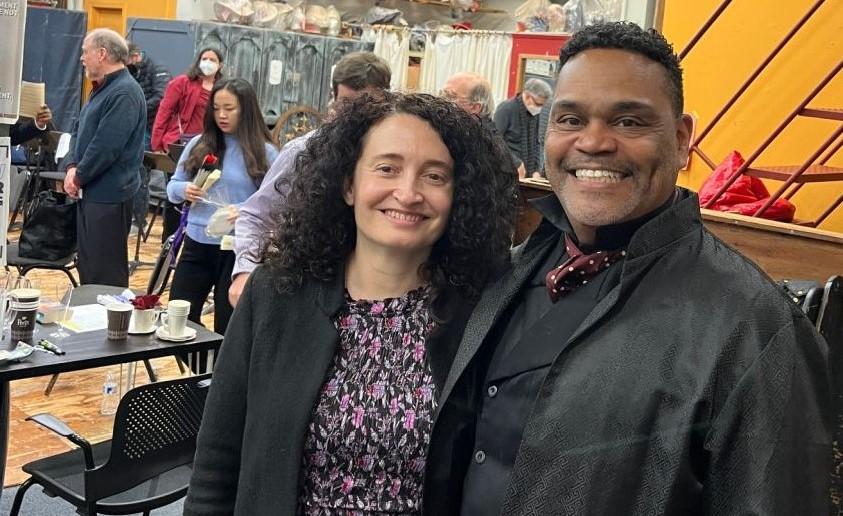
Just as a new film about the Chevalier de Saint-Georges is making the rounds, San Francisco’s Lamplighters Music Theatre is marking its 70th anniversary by presenting a commissioned stage play on the same subject, a first for the distinguished Gilbert and Sullivan company.
By Georges! A Day in the Life of the Legendary Chevalier de Saint-Georges tells the story of Joseph Bologne, the unique 18th-century Black virtuoso violinist, composer, conductor, and swordsman.
The world premiere of the Lamplighters-commissioned musical will be given on May 5 at the Presidio Theatre, followed by two more performances on May 6 and 7, the latter to be simulcast. Three more performances are scheduled at the Mountain View Center for the Performing Arts May 20–21.
Saint-Georges (1745–1799) was a French Creole musician who became a conductor of leading symphony orchestras in Paris.
He was born in the French colony of Guadeloupe, the son of the wealthy married planter Georges de Bologne Saint-Georges and an enslaved Senegalese woman named Nanon. At the age of 7, he was taken to France. He was educated at a private academy and studied horse riding, fencing, and dancing like any gentleman. At 15, he was a champion fencer and appointed “gendarme de la garde” by King Louis XVI.
Having received violin and composition lessons from François-Joseph Gossec, who had succeeded Jean-Philippe Rameau as director of the La Pouplinière orchestra, Saint-Georges joined a new symphony orchestra founded by Gossec. Later, he was appointed concertmaster and started composing. By 1773, he was appointed the orchestra’s conductor, and his violin concertos and many other compositions were performed in Paris.
In 1776, he was proposed as the next conductor of the Paris Opera but was denied this role because of a petition to Marie Antoinette telling the queen that the petitioners’ “honor and delicate conscience could never allow them to submit to the orders of a mulatto.”

Saint-Georges later lived in the house of the Duc d’Orléans when Mozart was also a guest there for a couple of months. Mozart, 11 years younger and at that time not nearly as famous as Saint-Georges, was reported to be jealous of and hostile to the Chevalier (who has sometimes been saddled with the moniker “the Black Mozart”).
A popular theory holds that Mozart swiped one of Saint-Georges’ ideas for his own Sinfonia Concertante, K. 364, and channeled his jealousy into the creation of the villainous Black character Monostatos in The Magic Flute. Apparently, Saint-Georges got along much better with Antonio Salieri, André Grétry, Christoph Willibald Gluck, and other composers and musicians.
As a conductor of the Concert de la Loge Olympique, a large orchestra of professionals and amateurs, Saint-Georges commissioned Joseph Haydn to write six symphonies, which premiered in 1787 and are known today as Haydn’s Paris symphonies. At this time, Saint-Georges traveled to London and was received by the Prince of Wales and King George III.
Following the French Revolution, Saint-Georges served as a colonel of a regiment later known as the Légion St.-Georges. This was the first all-Black regiment in Europe and the first of its kind to defend the French First Republic.
His affairs were legendary, often necessitating demonstrations of his excellent swordsmanship, but there was nothing romantic about his death in 1799, at age 53, of a bladder infection.
By Georges! features music by Charles Vincent Burwell, a book by James D Sasser, and lyrics by both coauthors.
Lamplighters Executive and Artistic Director Cheryl Blalock says the musical “unabashedly centers on Black excellence, and it does so with an uplifting and charming story.
“Lamplighters saw an important opportunity to create new roles in the genre of operetta, specifically for Black artists. It tells the story of a groundbreaking historical figure who should be more widely known, with wit and artistry in the grand tradition of Gilbert and Sullivan, drawing a compelling line between gifted Black musicians of the past and present.”

Blalock quotes composer Burwell, who said during the workshop of the musical that he “had no interest in writing another work that was focused on Black trauma.”
Mary Chun is music director; Céline Ricci of Ars Minerva is stage director. Antoine Hunter and the mixed-hearing dancers of Urban Jazz Dance Company participate.
Baritone Omari Tau is the Chevalier, Deborah Rosengaus plays Marie Antoinette, Martin T. Bell is Alexandre Dumas, Leslie Katter is Lilette, Amy Foote plays Mlle. Pompeuse, and Krista Wigle plays Mme. Sac d’Argent.
Bell says it’s rare to play a role written specifically for someone who looks like him (he is Black), and he thanked Lamplighters for “leading the way in operetta.”




